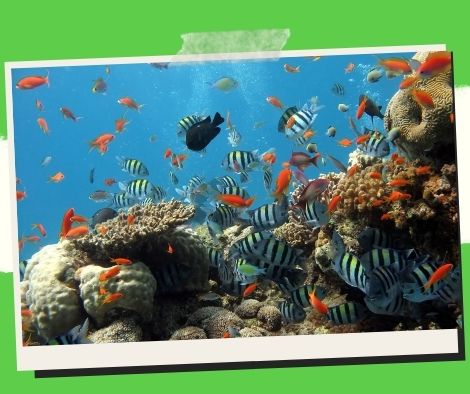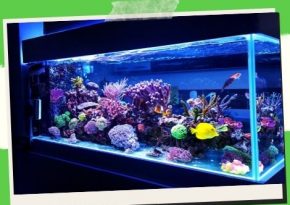
What to Feed Aquarium Saltwater Fish
Anyone who has ever owned a pet is aware that one of a responsible pet owner’s first duties is to ensure their animal gets a balanced diet. They are aware that their pets’ chances of living long, healthy lives increase with how well they are fed. The fish kept in saltwater aquariums are the same as other fish. The responsible owner of a saltwater aquarium is aware of the specific sorts of food that their fish require to survive, and they make sure to maintain an ample supply on hand.
The amount of food that tropical fish should be receiving is the first thing you need to know. The usual rule of thumb is to use a stopwatch when feeding your fish and time how long it takes them to finish. The fish should finish eating within two minutes, roughly. The fish in your tank are probably not eating enough if they finish their food in less than two minutes. If food is still on the table after two minutes, they are probably being overfed, therefore you should reduce back. A more precise method of estimating how much food fifty mature tropical fish should consume per month is ten grams, though this can vary with variety and growth.
A balanced fish diet normally has between thirty and thirty-six percent protein and ten percent fat. Amino acids ought to be included as well.
Knowing what kind of food your fish consume is the first step in feeding them responsibly. Because they enjoy eating the tiny invertebrates that call the coral their home, some fish cannot be housed in tanks with coral. Fish that are predators often require frozen or live food. Fish meals that float on the surface of the tank are not suitable for feeding bottom-dwelling fish, which should be fed a type of food that is heavy enough to sink to the bottom of the tank. The brine shrimp that they cultivate in their own brine shrimp hatchery is frequently fed to aquarium fish by owners who are interested in breeding their tropical fish.
Automatic fish food feeders are popular among people who take care of saltwater fish aquariums. Feeders that may be attached to the side of the aquarium are known as automatic fish food feeders. The feeder will automatically distribute the food at regular intervals after the fish owner has filled the hopper with food. This gives the fish owner more flexibility and relieves them of the burden of scheduling their time around feeding their fish. Because the typical automatic fish food feeder cannot dispense frozen or live food, predatory fish do find them convenient. Food blocks are sometimes added to aquariums by absent fish owners.
Owners of tropical fish should keep their surplus fish food in airtight containers in a cool, dry location. After three months, frozen fish food needs to be thrown out.
One of the risks of overfeeding fish is that the food waste can drastically alter the pH of the water in your aquarium. Your fish may perish if the water is contaminated by an excessive amount of leftover food.
Save/Share this story with QR CODE
Disclaimer
This article is for informational purposes only and does not constitute endorsement of any specific technologies or methodologies and financial advice or endorsement of any specific products or services.
 Need to get in touch?
Need to get in touch?

We appreciate your reading. 
1.) 

Your DONATION will be used to fund and maintain NEXTGENDAY.com
Subscribers in the Philippines can make donations to mobile number 0917 906 3081, thru GCash.
3.) 
4.) 
AFFILIATE PARTNERS

World Class Nutritional Supplements - Buy Highest Quality Products, Purest Most Healthy Ingredients, Direct to your Door! Up to 90% OFF.
Join LiveGood Today - A company created to satisfy the world's most demanding leaders and entrepreneurs, with the best compensation plan today.

 Business, Finance & Technology
Business, Finance & Technology

 Business Technology, Finance Technology & Information Technology
Business Technology, Finance Technology & Information Technology





